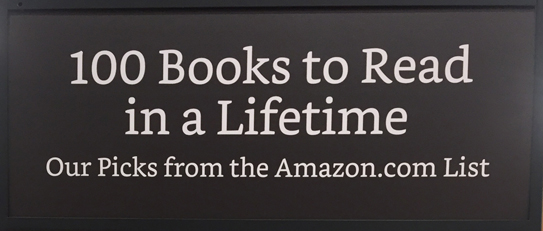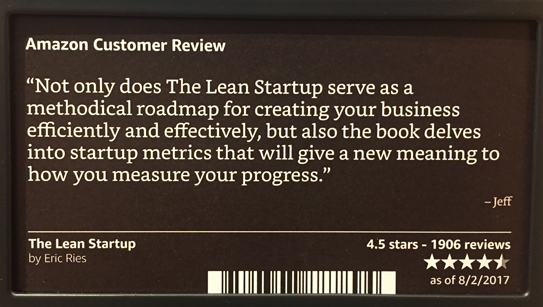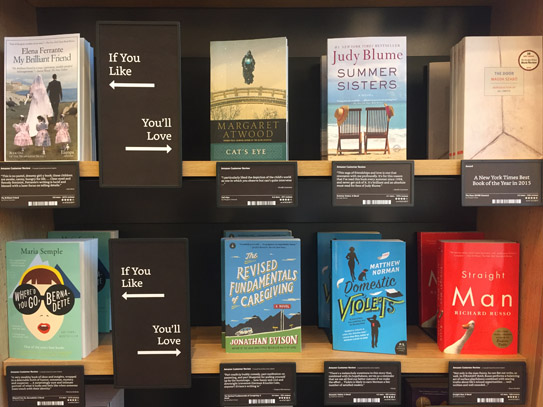Tag Archives: AmazonBooks
What Any Brand Needs To Learn From Amazon’s Physical Bookstore Experience
I just spent an hour at Amazon. Not on Amazon, at Amazon.
As an author with a second book release upon me, I study book marketing up close hence I just had to make a pilgrimage to Los Angeles’ first physical Amazon bookstore. It opened two weeks ago as part of the Westfield Century City Mall‘s universally talked about staggering 1$ Billion re-model (…and we thought retail was dead).

I was doubtful when I initially heard about Amazon going into physical storefronts thereby going back to the business model they once so successfully disrupted many years ago. Well, my doubt was quickly turned into exhilaration as Amazon did not simply open a storefront, they changed the way consumers experience products offline – with a whole lot of help from online insights.
Amazon successfully and holistically transformed what worked online into a physical brand experience. It took full advantage of its massive amounts of data, to my delight. At the AmazonBooks store, you are greeted with shelves titled ‘Highly Rated – 4.8 Stars & Above’ or ‘100 Books to Read in a Lifetime – Our Picks from the Amazon.com List.’ Not surprisingly, it works and it pulls you into a curated, and more importantly, customer-verified, experience. Do you trust that Maggie from the local bookstore has a ‘Staff Pick’ or do you trust hundreds, thousands, millions of readers just like yourself? Sorry, Maggie, I am all up for supporting local stores, but that was an easy pick.

Not so quick though, as Amazon knows it needs to, and should, make the experience a local one. ‘Read Local – Notable and Highly Rated Los Angeles Books’ as well as top-rated books from readers in L.A. are showcased prominently. Another nice touch is Amazon’s integration with the online reader community of Goodreads, albeit logical as Amazon acquired the site in 2013. Still, seeing ‘Goodreads Most-Read Classics’ and ‘Book Club Picks from Goodreads’ adds more intrigue to the books stacked in traditional bookstore style underneath. Each of these components engages, builds trust, and keeps you in the store longer.
But let’s not paint a picture of Amazon showcasing only the proven books, by the biggest authors, on their rather limited shelf-space. You’ll see books of unknown authors, some that are rated only a few times, next to the big sellers. One book particularly stood out (Innovating by Luis Perez-Breva and Nick Fuhrer) as Amazon’s description reads ‘100% of reviewers rated this item 5 stars.’ The book only had 21 reviews in total. This makes me feel like I am discovering something, which is one of the key ingredients of a great book store.
Amazon also picks customer reviews to showcase, rather than the author’s book description, or an Amazon editorial review, which makes the experience even more personable.

The last store curation effort that made my heart speed up was the huge shelf-space dedicated to ‘If you like this, you’ll love these.’ A key component of the Amazon.com shopping experience, seeing a book you liked on a shelf with six you never heard of next to them, suggesting that you’ll love them is a sure-fire win in any customer browsing experience.

Besides taking away that Amazon has nailed its data integration into its retail environment – not to anyone’s surprise – what can you, as a CMO of a brand or as a startup entrepreneur learn and immediately utilize from its success?
Map your online customer brand experience, then take it offline.
It feels upside down, and precisely that is Amazon’s amazing ‘Zag’ in this instance. How do users behave on your site, what content do they read, what call-to-actions do they skip, which offerings do they spend the most time on, and so on and so forth. Study it. It’s there, you just have to start digging into it.
Then take that data and make use of it in all the ways you conduct business offline. As many of you don’t have retail stores that you can start experimenting with, you may think this is not applicable to your brand. Think again: sales presentations, prospect case study conversations, tradeshow experience designs, new product launch considerations, brand initiative ideas, brand narrative adjustments – you name it. That online journey can be a game-changer in the way you engage with your customer/consumer/member everywhere else.
Much has been said about leveraging latent data and creating actionable new data points for brands of all sizes to utilize, but the essence of what Amazon did is actually rather simple at heart: Study the trail your online users leave behind and use it to educate a new or revised, deeply educated and highly personalized offline brand experience.
What we learn from AmazonBooks is that these insights can even be used to craft a brand narrative for a new brand extension: Translating what works naturally online (‘if you like this – you may like that‘ as an example) for their brand and making it work as a novelty in an offline experience that is 100% true to Amazon’s brand essence. It’s not just connecting data for increased sales, it is doing so in a way that is intrinsically true to the core brand philosophy.
Amazon’s user journeys helped create an offline sub-brand. It may be time to look at your brand’s online data, create your user journeys and translate them into successful offline experiences. It will re-affirm, or re-educate your brand’s essence, or perhaps it will even inspire you to launch a new brand extension.
Until then, you can find me at Amazon as on Amazon is just too one-dimensional and old-fashioned.



